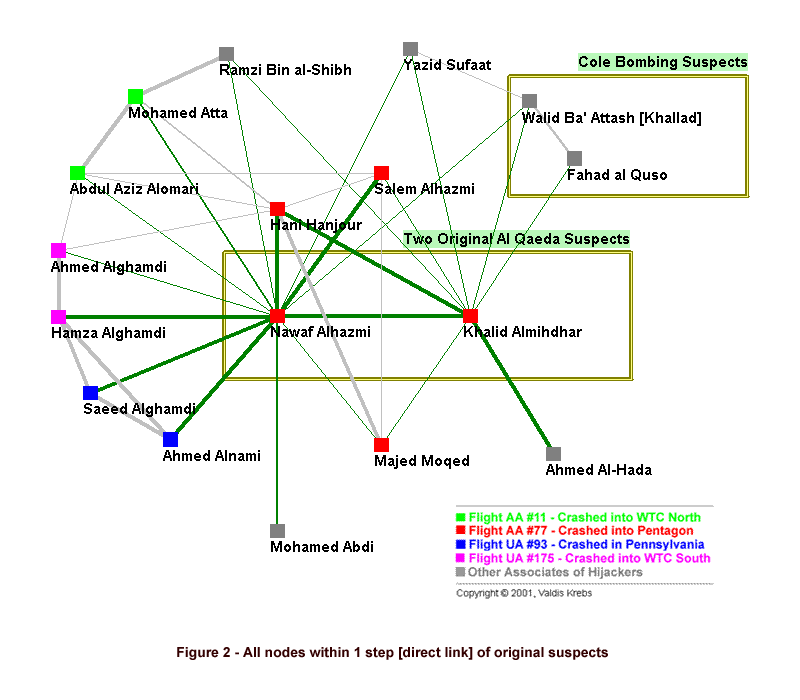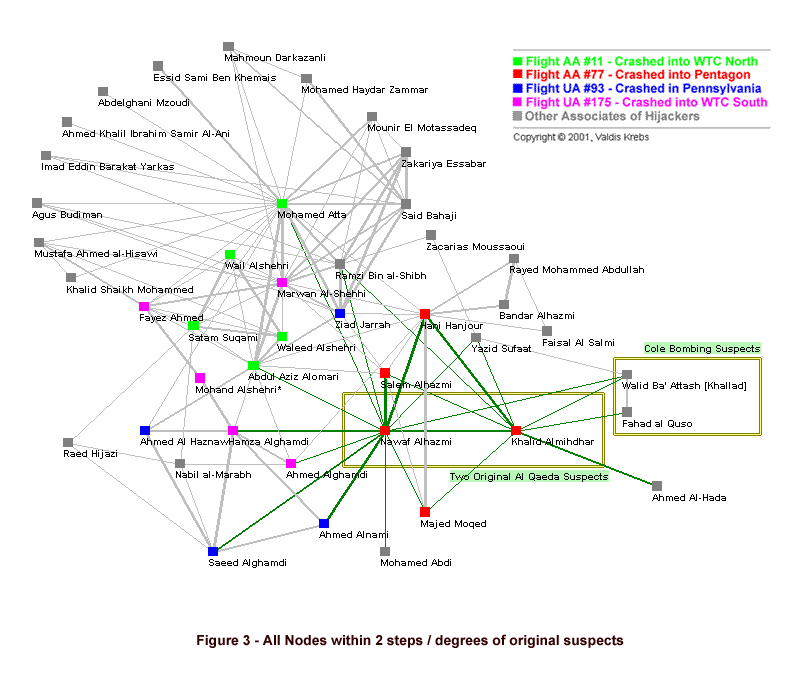Using Graph Analysis for Crime Prevention
http://www.orgnet.com/prevent.html
Analyzing information about something that has already happened in order to find patterns is much more effective than blindly trying to predict future outcomes. The large network of data that is collected and readily available for investigators to use has changed the the face of crime prevention.
A man by the name of Valdis Krebs illustrates the effectiveness of using an association matrix and graph analysis to crack down on the terrorist network involved with two known al-Qaeda suspects responsible for the 9-11 terrorist attacks. The CIA used what is known as Social Network Analysis in order to find those involved with the suspects, Nawaf Afhazmi and Khalid Almihdar. By tracking their phone calls and e-mails, people who visited them in specific locations, and network of monetary distribution, the CIA was able to interpret this data through a graph (see picture below). The graph below shows the suspects’ immediate ties and those who were involved in the terrorist meeting in Malaysia in 2000. As new information was gathered, the efficacy of the graph increased.

all people directly affiliated with initial suspects
The next step taken was to find those who were indirectly involved with the attacks. With the nodes from the first graph, the CIA repeated the process and found those who were in frequent contact with these people. The image below shows the graph of all nodes within two steps of the two initial suspects. Due to the fact that the information was gathered after the attacks, we know the identities of the 19 hijackers. The graph below shows something interesting: all 19 of the terrorists were within two steps of the initial suspects.
Krebs notes that this Social Network Analysis had taken place after the actual attacks and admits that trying to prevent an act of terrorism before it actually happens is a much harder task. It is harder to know who to look for, what information is important, and who are potential threats when there is no crime that has been committed yet. Nevertheless, data analysis and pattern recognition have and will continue to change the way terrorism and crime prevention is approached.

